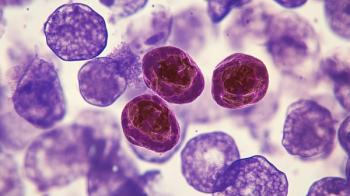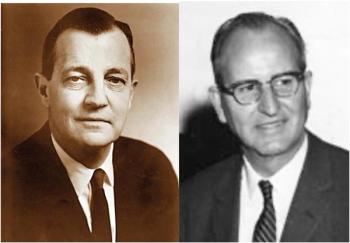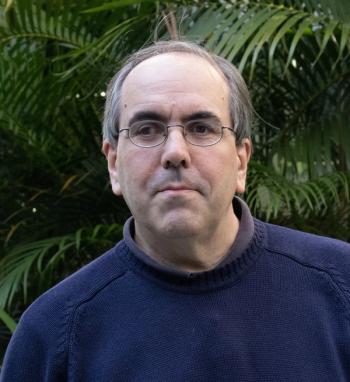
A recent study highlights how anisotropic nanostructures can improve surface-enhanced Raman spectroscopy (SERS) analysis of cultural artifacts, including artwork.

A recent study highlights how anisotropic nanostructures can improve surface-enhanced Raman spectroscopy (SERS) analysis of cultural artifacts, including artwork.

Spectroscopy sat down with Knut Baumann of the University of Technology Braunschweig to discuss his latest research examining the classification of two closely related horsetail species, Equisetum arvense (field horsetail) and Equisetum palustre (marsh horsetail), using near-infrared spectroscopy (NIR).

Last year, we released a content series titled “Advancing Agriculture for Future Generations.” Here, we compile some of the latest studies in this space.

In this edition of “Inside the Laboratory,” Elise Granek of Portland State University, in Portland, Oregon, and Susanne Brander of Oregon State University, in Corvallis, Oregon, discuss their collaborative research efforts and what their laboratories are working on.

Top articles published this week include a video interview that explores quantifying microplastics and anthropogenic particles in seafood, an interview discussing how spectroscopy can assess salmon freshness, and a news article about using near-infrared (NIR) spectroscopy in classifying tea.

Spectroscopy recently sat down with Elise Granek, Susanne Brander, and Summer Traylor to discuss their recent study quantifying microplastics (MPs) and anthropogenic particles (APs) in the edible tissues of black rockfish, lingcod, Chinook salmon, Pacific herring, Pacific lamprey, and pink shrimp.

A recent paper published in Spectrochimica Acta Part A: Molecular and Biomolecular Spectroscopy argued that near-infrared (NIR) spectroscopy technology is the most sustainable choice for food production.

Researchers have demonstrated the potential of deep ultraviolet Raman spectroscopy (DUVRS) as a rapid, nondestructive, and sensitive tool for detecting antihistamines like cetirizine in oral fluid samples, paving the way for broader forensic applications.

A recent study from Texas Tech University explored using attenuated total reflectance Fourier transform infrared (ATR FT-IR) spectroscopy in age determination as part of forensic investigations.

A recent study from Chiba University examined a new way to improve single-cell inductively coupled plasma–mass spectrometry (scICP-MS).

The editors of Spectroscopy provide a compilation of talks that spectroscopists should consider attending on Tuesday January 28th during the Photonics West Conference in San Francisco, California.

A recent study explored how laser-induced breakdown spectroscopy (LIBS) signals are influenced by ambient gas properties.

To better determine fish freshness within the context of rapid spectroscopic analyses, salmon fillet was analyzed via hand-held fluorescence and absorption spectroscopy devices across the visible and near-infrared (vis-NIR) range and benchmarked against industry-standard potentiometry and the gold-standard laboratory procedure, nucleotide extraction assays, over a 11-day period.

The editors of Spectroscopy provide a compilation of talks that spectroscopists should consider attending on Monday January 27th during the Photonics West Conference in San Francisco, California.

A comprehensive understanding of aging phenomena and the resulting performance loss occurring in lithium-ion batteries (LIBs) is essential for ongoing improvement of the technology. The formation of a uniform solid electrolyte interphase (SEI) is of crucial importance for the performance, lifetime, and safety of LIBs. Transition metal dissolution (TMD), caused by degradation of the cathode, and subsequent TM deposition on the anode surface can deteriorate the protective properties of the SEI, possibly leading to reconstruction of the SEI and loss of active lithium. We explore this topic here.

In recent years, advances in X-ray optics and detectors have enabled the commercialization of laboratory μXRF spectrometers with spot sizes of ~3 to 30 μm that are suitable for routine imaging of element localization, which was previously only available with scanning electron microscopy (SEM-EDS). This new technique opens a variety of new μXRF applications in the food and agricultural sciences, which have the potential to provide researchers with valuable data that can enhance food safety, improve product consistency, and refine our understanding of the mechanisms of elemental uptake and homeostasis in agricultural crops. This month’s column takes a more detailed look at some of those application areas.

In this "Icons of Spectroscopy" column, executive editor Jerome Workman Jr. details how Van Zandt Williams from Perkin-Elmer Corporation and American Cyanamid, and Norman E. Wright from the Dow Chemical Company, have made significant contributions to the field of vibrational spectroscopy.

In the fourth installment of our review of infrared spectral interpretation, we will discuss the spectroscopy of hydrocarbons. We will look at the stretching and bending vibrations of methyl (CH3) and methylene (CH2) groups, how to distinguish them, and how to know whether one or both of these functional groups are present in a sample. We will also discuss aromatic hydrocarbons, specifically the C-H stretching and bending peaks of mono- and disubstituted benzene rings, and how to distinguish them.

Top articles published this week include our ”Top 10” accessed technical articles for the month, a Q&A interview that discussed applying near-infrared (NIR) spectroscopy to monitor fatty acid profiles in black soldier fly larvae (BSFL), and an article about analyzing microplastics in U.S. seafood.

A recent study out of China explored using a new continuous solid-phase extraction spectroscopy (CSPES) device to monitor water quality.

This excerpt from The Concise Handbook of Analytical Spectroscopy, which spans five volumes, serves as a comprehensive reference, detailing the theory, instrumentation, sampling methods, experimental design, and data analysis techniques for each spectroscopic region.

A recent study from researchers in Brazil examined a-pinene’s chemical composition using mid-infrared (MIR) Fourier transform infrared (FT-IR) spectroscopy.

A recent study published in Meat Science highlighted how visible and near-infrared (vis-NIR) spectroscopy, when combined with chemometrics, can differentiate lamb meat based on pasture-finishing durations.

Spectroscopy sat down with Daniel Cozzolino of the University of Queensland to discuss his latest research using near-infrared (NIR) spectroscopy to determine the fatty acid content in black soldier fly.

A recent study examines widespread microplastic contamination in key Oregon seafood species, emphasizing the need for coordinated local and global efforts to reduce plastic pollution and protect ecosystems, public health, and cultural traditions.

The American Chemical Society (ACS) released its new strategic plan for 2025–2029, which reinforces the organization’s mission and core values.

A recent study from Shanghai University demonstrated aa novel method for identifying and quantifying animal-origin milk powders.

A recent study examines how vibrational spectroscopic techniques are being used to evaluate the quality of seaweed.

A recent review article highlighted how two-dimensional correlation spectroscopy (2D-COS) is advancing microplastics research and uncovering their aging processes and interactions with environmental substances.

A recent study highlights the potential of dissolved organic matter (DOM) as a key indicator for water quality management in Lake Baiyangdian.